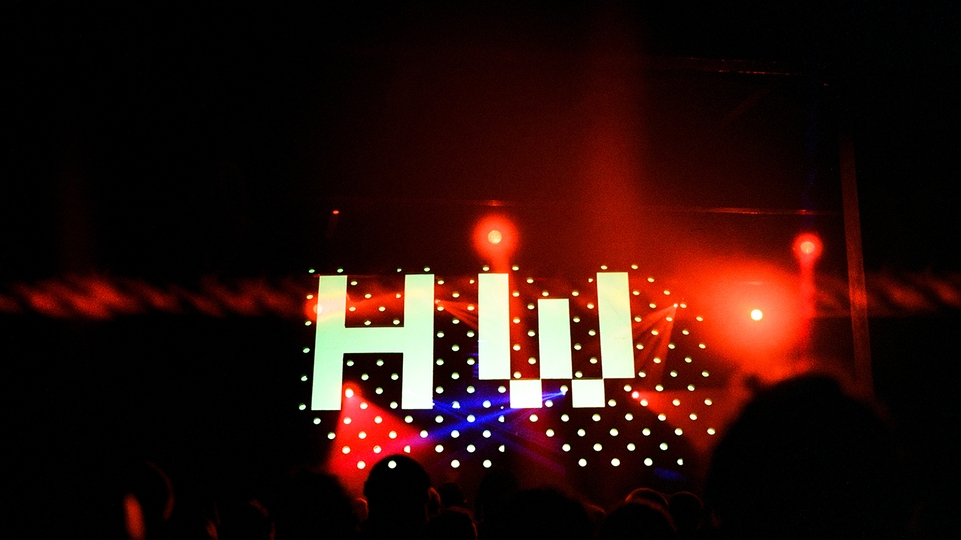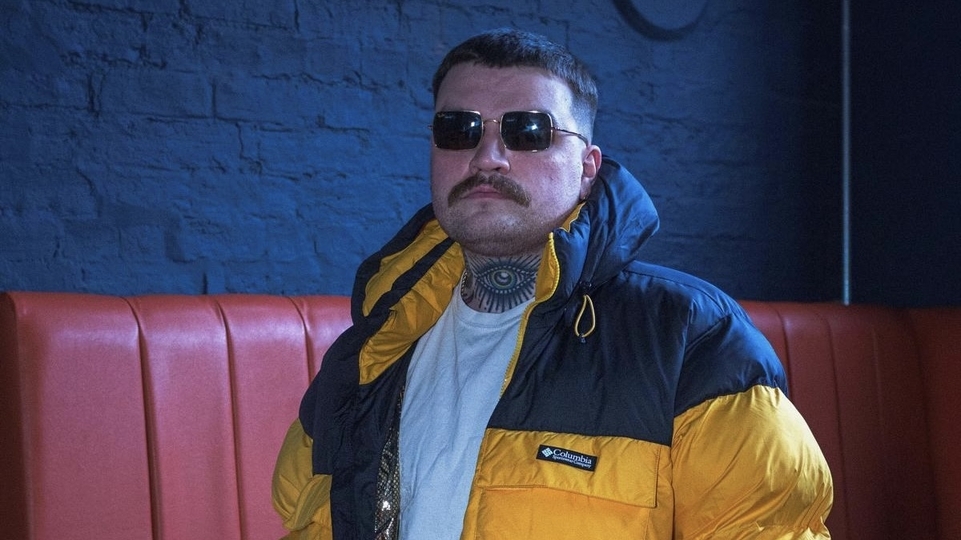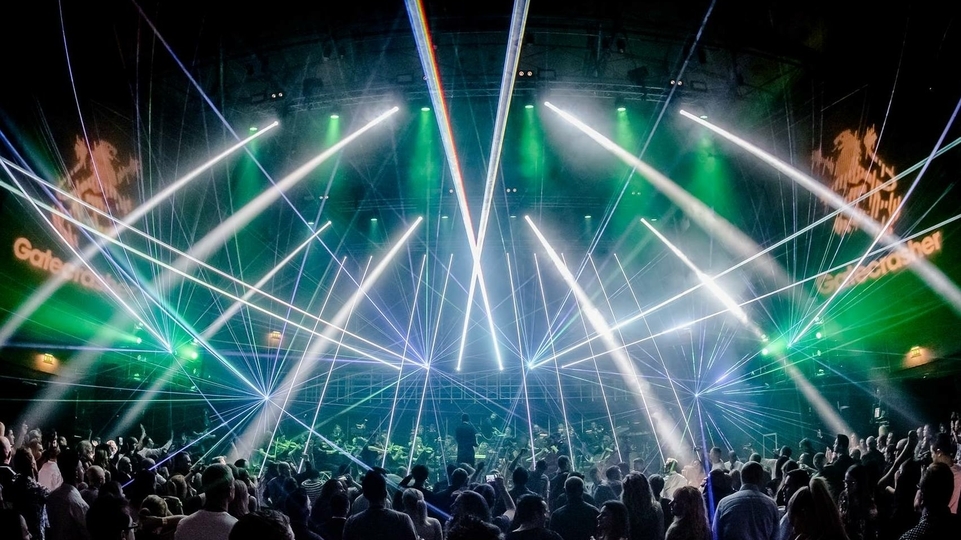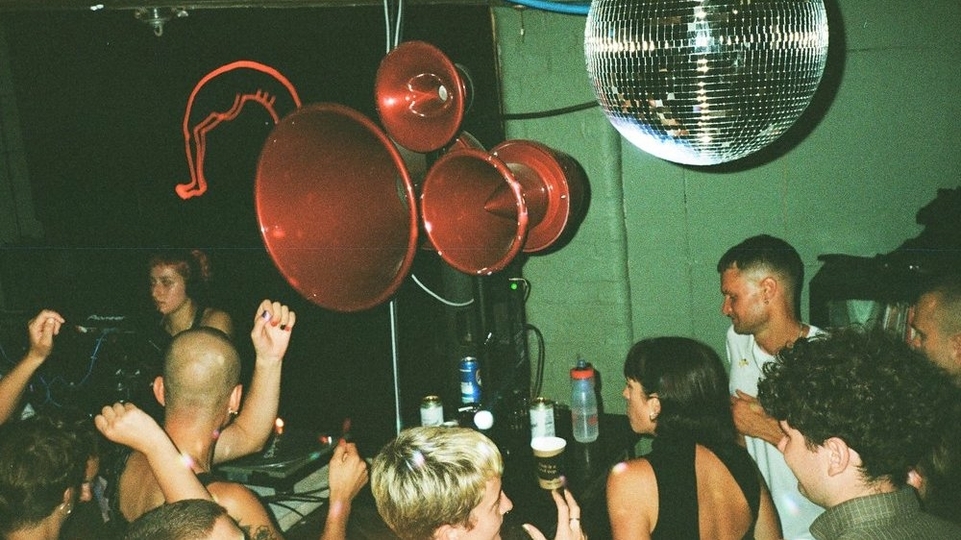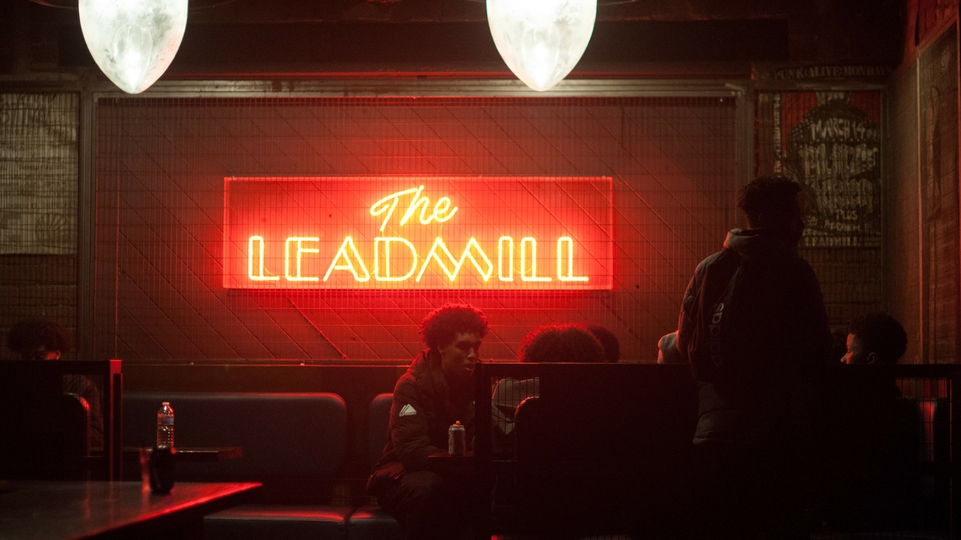
Industrial strength: finding hope at Sheffield’s No Bounds festival
Centred around Sheffield’s Hope Works club, No Bounds festival’s sixth edition in October mixed cutting-edge rave NRG and thought-provoking art with a community-building ethos. With the help of founder Liam O’Shea, artistic curator Amy Carter Gordon, and club residents Gracie T and 96 Back, Eoin Murray reports back on the inspiring weekender, and learns the story of its spiritual home as it celebrates its 10th anniversary
“Without hope we're fucked,” says Liam O’Shea, founder of Sheffield club Hope Works, and director of No Bounds festival. “Hope can be different things at different times... But if you break it down to its core element, for me, hope represents the creative energy to fight through a day's given problems... If we lose that flame on an individual level, life isn’t going anywhere good. It makes life worth living.”
He’s speaking to us a few days after No Bounds’ sixth edition, which takes place over a brisk October weekend in venues around the city. Hope Works, now in its tenth year, serves as its nexus. The festival and its spiritual home are testaments to the energy that O’Shea – who DJs and produces under the name Lo Shea – describes. No Bounds marries full-throttle rave NRG with thought-provoking art through its carefully curated programme of live performances, DJ sets, installations and workshops. With an ethos that centres community and accessibility for all, it posits that, through these shared experiences, we can find the drive within ourselves to tackle at least some of life’s challenges, and have a fucking laugh in the process.
There’s a buzz in the air - both literal and figurative – at Sheffield Cathedral ahead of Friday’s opening concert. As punters slowly arrive from the drizzly world outside, disembodied vocalisations swoop around the space at unpredictable intervals. This is Patterns in Between Intelligences, an interdisciplinary art group who use live coded sound, dance, machine learning and e-Textile experimentation to put together a piece of performance art that challenges the use of AI as a commercial tool, in favour of a more spiritual and symbiotic practice. As it builds to a climax of thunderous beats and strobe lights, the feeling is that of a festival waking up, its cerebral and sonic engines firing on all cylinders from the get-go.
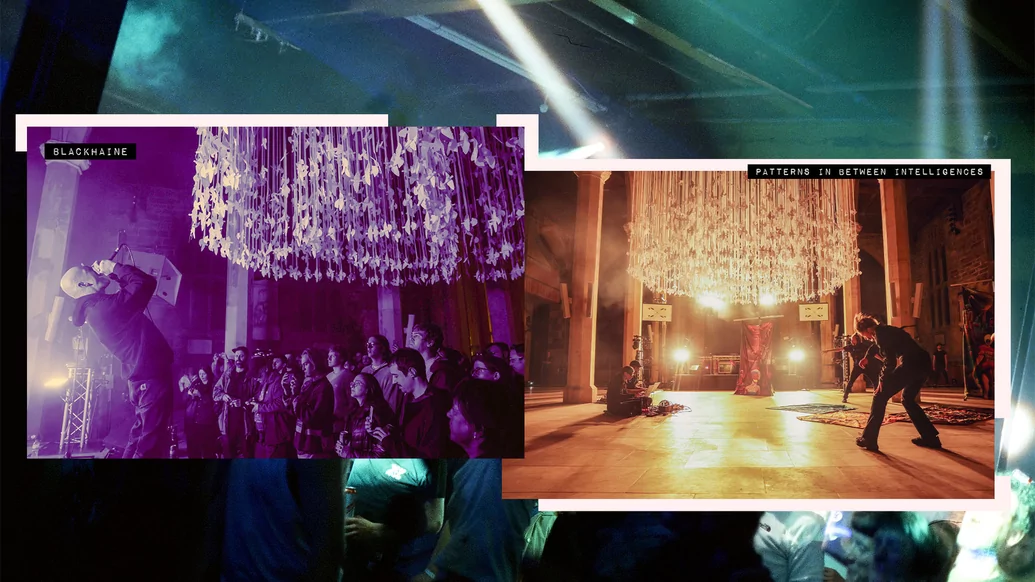
"It's all about storytelling, and communicating ideas. In doing that, you can bring something to life in a beautiful way, I think.” – Liam O'Shea
After a dreamlike modular set from Glasgow’s Konx-Om-Pax, accompanied by amorphous neon visuals, Preston-born, Salford-based rapper and dancer Blackhaine emerges onto the cathedral stage in a shroud of smoke. Like a furious preacher, he snarls, gasps and screams the social-realist bars of his ‘Armour II’ and ‘And Salford Falls Apart’ EPs over apocalyptic drill beats, drenched in distorted drones and dystopian soundsystem squalls. As the Space Afrika collaborator descends on the congregation, lunging with his two hype-acolytes in tow, it’s hard not to feel snared by the visceral sense of ceremony, and the realisation that this is potentially a once-in-a-lifetime setting for his music.
That feeling lingers during Blawan and visual artist Bernhard Holaschke’s live A/V set. As rib-rattling beats erupt from the South Yorkshire native’s hardware, a kaleidoscopic carousel of animation flares up behind them: burning tropics, aliens, knights, witches, dragons, cybergoths and Teletubbies all flash up and disappear, replaced by a chopped-up snogging clip from a Twilight film and scenes like something from a fantasy video game. Equal parts absorbing and overwhelming, it’s a tidal wave of stimuli that channels the “information overload” the futurist author Alvin Toffler wrote about in his books, Future Shock and The Third Wave, which inspired the birth of techno music in Detroit.
In a similar way to how Juan Atkins and co. fashioned themselves on Toffler’s “techno rebels” – who embraced, rather than feared, the technological advances of post-industrial society – this performance harnesses the relentlessness of data consumption today. Turning it into a piece of exhilarating art, to be displayed in a place of worship, feels like a scream straight back into the monster’s mouth. With the cathedral’s incredible acoustics at play, it also just sounds gnarly as all hell, and fills festival-goers with fuel for the night ahead.
“It's about how you explore a city,” says O’Shea of the way No Bounds’ makes use of Sheffield’s spaces to convey its thematic ideas, from grassroots venues and a community centre to a working power station. “You've got a concept, and the way you explore the city through that concept helps create a lens, and [helps you] focus in a particular way. [It’s about] working with the venues themselves and the people who run them, and having them echo the concepts that you’re working with.”
“Any city has got so much to offer,” he continues. “It's got a wealth of history, it's got a wealth of stories and human connections tied into its buildings and into the earth itself. It's all about storytelling, and communicating ideas. In doing that, you can bring something to life in a beautiful way, I think.”
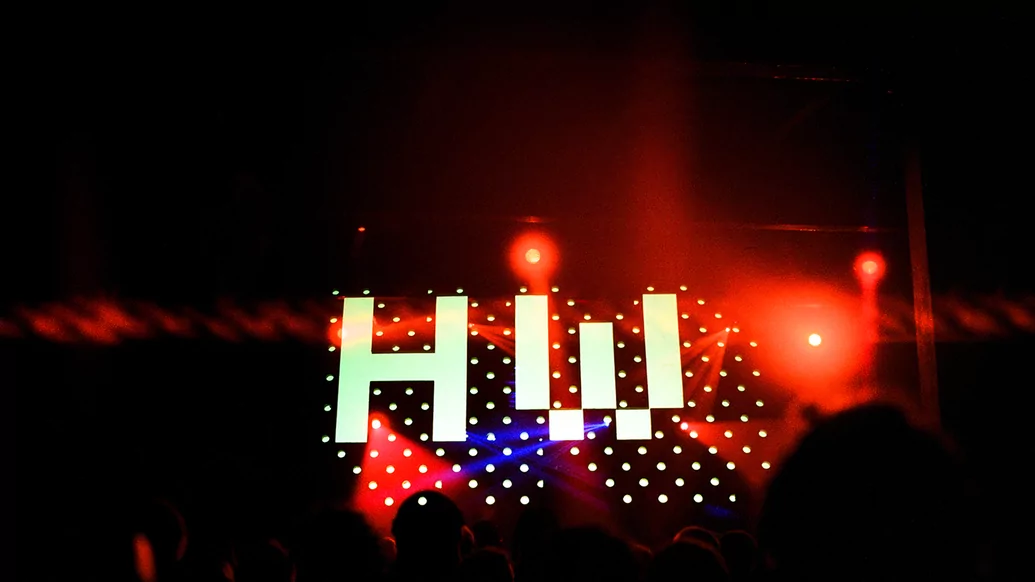
For O’Shea, no venue embodies this idea more than Hope Works, an old WW1 gun barrel factory, which – fun fact – already had its name when he found it just over a decade ago. “It’s like it was meant to be,” he says. “I kept it because I knew what it meant. It was this little space that came for me at a time in my life when I really needed it.”
A 400-capacity warehouse located in the northern part of the industrial city, Hope Works was the culmination of two decades of personal and creative growth for O’Shea. After moving to Sheffield from Nottingham in 1991, he became embedded in the city’s electronic music scene, which at the time was steeped in the sound of bleep techno and the development of Warp Records. He played regularly at the techno party No Logic in The Arches, not far from where Hope Works is now, and was a resident DJ at the NY Sushi night at Unit, where jungle/d&b was often the order of the day. After several years spent on dancefloors, behind decks and deep in the production zone pushing his own artistic endeavours, O’Shea “crashed and burned”, he says, before returning in the mid-noughties with a new sense of perspective.
In 2007, he launched Mixed In Sheffield. Originating as a party focused on local electronic artists, the platform has evolved over the years to encompass a label and numerous multidisciplinary projects, all with the aim of “connecting the dots” between those creating art of all types in the city. “I’d felt so alone and isolated [before], that I just wanted to connect to people in my community again,” O’Shea says. “Mixed In Sheffield was about celebrating underground producers and what was going on in people's bedrooms.”
It was from this ethos that Hope Works was eventually born in 2012: a blank, industrial canvas upon which O’Shea, a self-proclaimed “gobby bastard” with a knack for making things happen, could freely continue his pursuits in championing local music at a roof-bothering volume. “They say, when you’re doing things, try to have everything sing the same song,” he says. “Everything was singing the same song with [Hope Works]. It was all wrapped up in that. It’s become something that’s given me an unspoken energy.”
It’s an energy that’s helped turn Hope Works into one of the UK’s most special clubs over the past decade; it’s become a beacon for underground dance music in the North, hosting international legends including DVS1, Jeff Mills and DJ Stingray 313 alongside local heroes and emerging talent. In 2022, it was voted the 89th best club in the world by DJ Mag readers in the annual Top 100 Clubs poll. In 2017, the first edition of No Bounds took place, and every year since (including a virtual edition in 2020), it has pushed the envelope of UK electronic music festivals with its emphasis on experimental art and technology as well as boundary-smashing music.
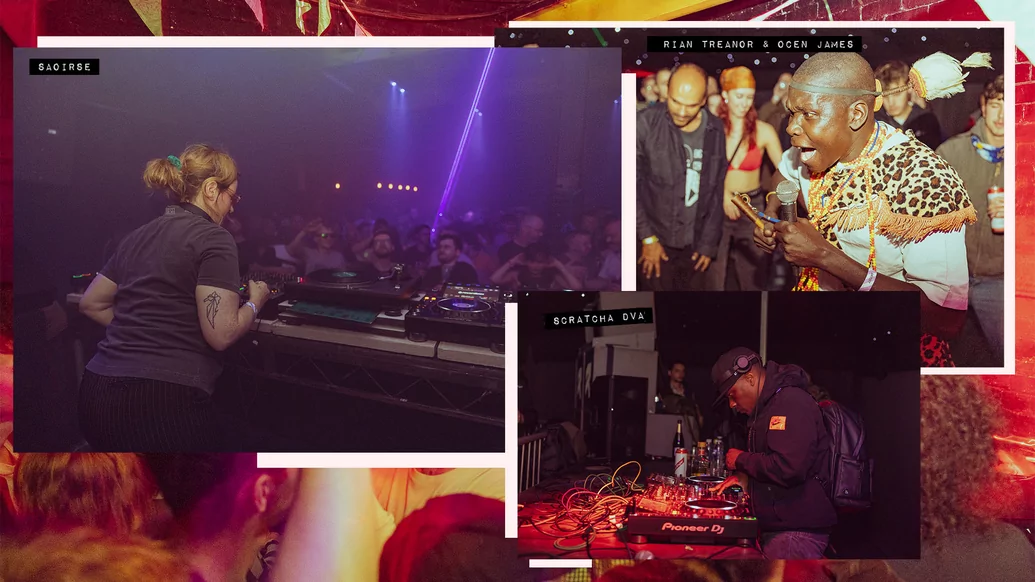
All of this feels obvious as we arrive at Hope Works on Friday night, and find a growing crowd of dancers taking in the creative link-up of Rotheram-born electronic artist Rian Treanor and Ugandan Acholi fiddle player Ocen James, whose invigorating fusion of traditional and club-tuned sounds makes for a thrilling pace-setter. This goes down in the Courtyard Anomaly, one of the five stages dotted around the Hope Works vicinity for the duration of the weekend.
In the Mothership (the club’s main room), local heroes The Black Dog play a tough-as-nails techno set to a dancefloor filled with ravers of all ages, powering through for a bit longer than planned due to the unfortunate absence of Helena Hauff, who Saoirse ultimately steps up to replace with a typically energised selection. Meanwhile, the triptych of TSVI, Scratcha DVA and SHERELLE b2b Kode9 keeps things fast, frenzied and fully-charged in the Courtyard as rain pelts off the roof. The tiny High Density Energy Chamber lives up to its name as junglist Tim Reaper drops a manically pitched-up ‘Honey Badger’ by Rhyw to an at-capacity room before local bassline crew Tekkers take over.
Gracie T, a Hope Works resident and co-founder of The Beatriarchy collective, also plays, delivering a high-energy set of genre-hopping club music. During the weekend, they also host a DJ workshop with fellow resident Diessa, as well as a Beatriarchy talk/workshop on Saturday afternoon, and a stage takeover back in the Energy Chamber later that night. “We were so excited to run our first workshop with No Bounds, which was aiming to stop gatekeeping and to share information about getting into the music scene,” Gracie says. “More than anything, we hoped that our attendees would take away a sense of community from the event.”
While pointing to local DIY collectives and community groups, Gut Level and Foodhall, who have both lost spaces recently (Gut Level has since found a new temporary home), Gracie explains the importance of events like No Bounds to the fabric of Sheffield’s music scene. They also outline how being a resident at the club – alongside the likes of Reaper, Lupini, MYNA, Sarinity Jones and others – has been a nurturing experience for them as they’ve made their own strides in the UK club scene. “It gave me the confidence to play big venues earlier in my career,” they say.
Back in the club’s Janksey Room, Bristol producer and vocalist Grove delivers a fierce live set of experimental club-dancehall-punk-rap fusionism while, under the twinkling house party lights of the Kuiper Belt tent, Berlin-based DJ Fart In The Club serves up a set of irresistible tech house with a psychedelic flair.
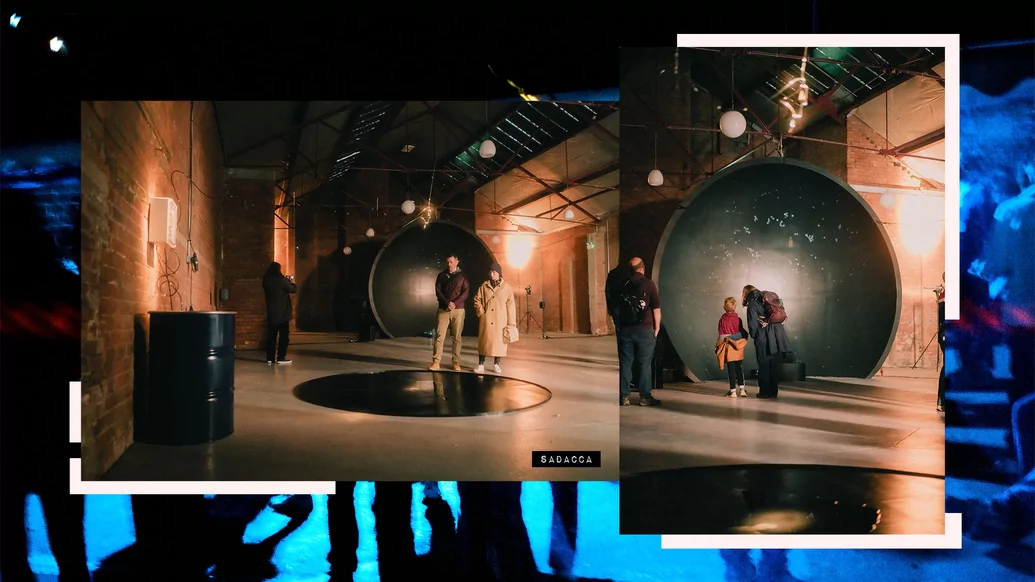
"Art is for all. Music is for all. I want people to feel like they’re welcome to access all of it.” – Liam O'Shea
The next day we walk to SADACCA, an Afro-Caribbean community centre located on the recently renamed Windrush Way, founded in 1986. Throughout the weekend, part of this space houses two installations by artists associated with Sheffield Hallam university. God's Eye View IV (Conflict) comprises a giant hemispherical structure built by artist David Cotterrell, upon which minute light projections explore the extent to which we seek to visualise data, all soundtracked by an eerie, algorithmically generated piece by Shelly Knotts. Meanwhile, Lise Autogena and Joshua Portway's piece, 196.85ml/h, makes the terrifying pace of climate change visible by making a drop of oil fall onto the floor at the same rate that the ocean levels are rising (almost once per second).
The space is free for all to enter, whether they’re attending the festival or not. This was important, curator Amy Carter Gordon explains, as was working closely with SADACCA and its community, in order to ensure that the art shown at No Bounds is there for everyone to enjoy and engage with. “SADACCA is an integral part of the fabric of the city, but they’re very often overlooked,” she says. “It’s about saying, ‘you're part of this conversation, we need you to be a part of the art that we create together’. [No Bounds] should be something we feel is informed by the roots of the city, and they’ve been here for over 35 years.”
It’s a sentiment that’s echoed by O’Shea. “The whole thing for me is about bringing communities to meet each other, and doing that through the prism of art and music,” he says. “It’s really important to build these bridges into communities that can be excluded from the arts… Art is for all. Music is for all. I want people to feel like they’re welcome to access all of it.”
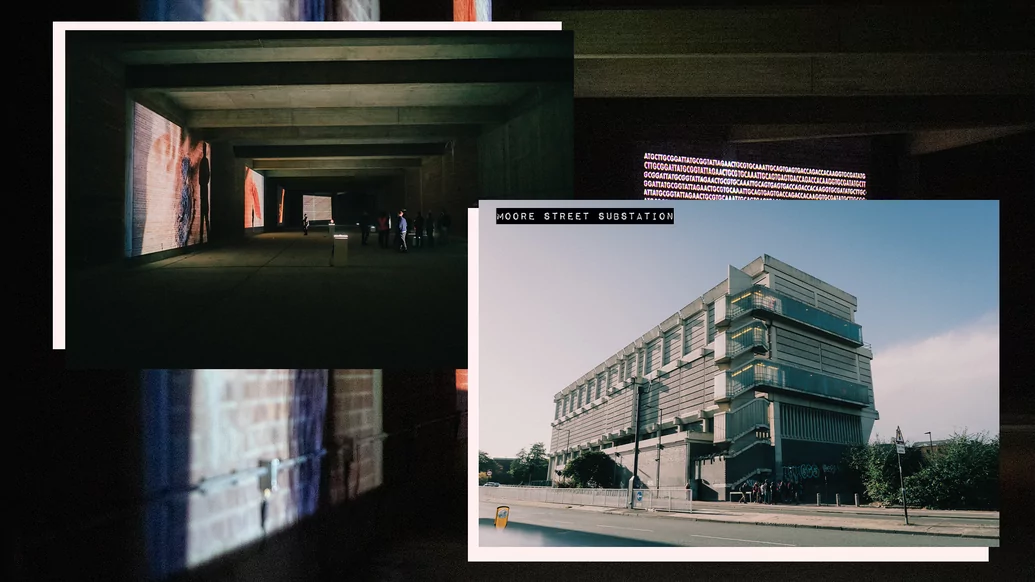
Next we travel to Moore Street Substation, a gigantic brutalist building that has been powering Sheffield since 1968. This weekend, Carter-Gordon tells us, is only the second time it has been made open to the public; once again, the experience is free. Groups of no more than six are invited to climb 14 flights of stairs into a vast, cavernous space, where we find Sheffield-based French artist and researcher Noémie Soula’s Mythical Living Data, a multidisciplinary project encompassing science, sculpture, projection and sound to explore how environmental pollution may fundamentally alter our DNA and physical structure.
3D artefacts and enormous projections show imagined scenarios of adapted organs, all soundtracked by echoing whispers and haunting electronic drones made by Matteo Bandi, who drew inspiration from the tangible hum of the substation generator beneath the space. “That installation was all about using storytelling to imagine how our bodies could be changed by evolution,” Carter-Gordon explains. “[Moore Street] just gives you the physical space to imagine some of these ideas writ large. It gives a sense that it should engender a sort of concern… You see the organs at that scale, and you have to then make a connection to your own body and your own wellbeing.
“[Noémie Soula] wants people to ask their own questions and make their own minds up,” she continues. “She’s leading you gently to a consideration of your own body. But, perhaps obviously, there’s a more societal concern about what we're all doing, and how the way we live is impacting all of us physically. In the substation, you have to then have a broader conversation about our over reliance on fossil fuels. Why does this generator need to work so hard to power this city?”
It’s a genuinely sublime experience, and one that highlights the level of curation at play at No Bounds, where art and ideas speak directly to the city, and the city in turn speaks back.
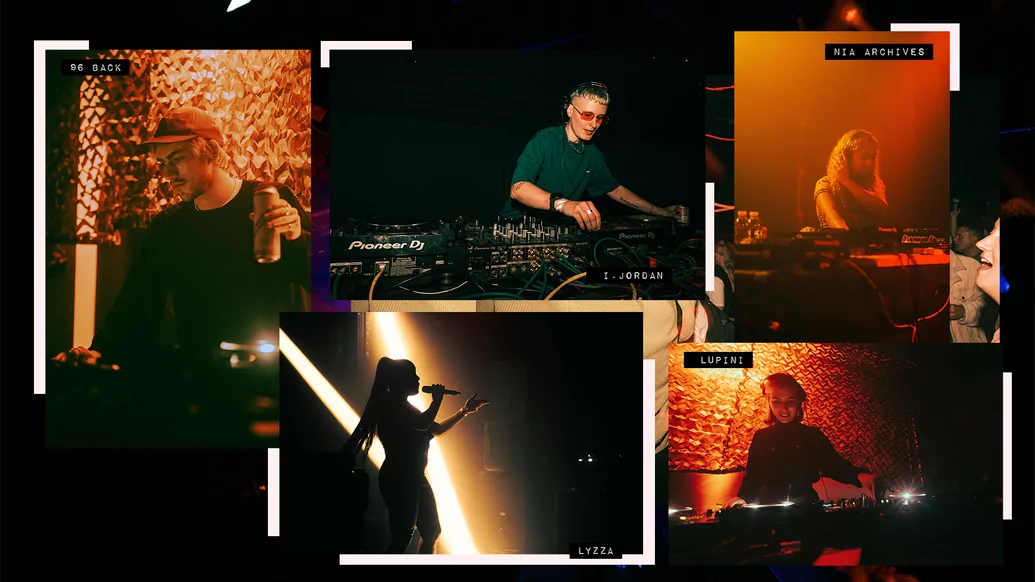
We make a quick stop at Delicious Clam, a DIY venue, label and studio space, to catch Kalter, a duo whose sound sits in the direct lineage of legendary local acts Cabaret Voltaire and Clock DVA. After a day that also featured a Drone Yoga session, a light and sound bath at the cathedral run by Debbie Chia, and live sessions at DIY venues Plot 22, Bal Fashions, DINA and The Dorothy Pax, we head back to Hope Works, where Brazilian club-pop fusionist LYZZA is setting the Mothership up for another night, ahead of performances by Nia Archives, Craig Richards b2b Calibre, LTJ Bukem and Wanton Witch.
While Palms Trax, I.JORDAN and LCY b2b Diessa hold it down in the Courtyard Anomaly, current and former residents Lupini, 96 Back and Ifeoluwa (alongside Tom Boogizm and Mun Sing) shell it in the Janksey Room with sets packed with bass, UK funky, gqom, techno, drill, Turkish psych and more. Sheffield-born producer 96 Back, whose mum is here, debuted his live show at the festival last year, and brings a fresh take this time round. As he runs through a set of gleeful, glitchy club stuff and IDM, he looks like he’s having as much of a blast as the packed-out dancefloor.
When we speak to him a week later, 96 Back emphasises the support that young artists such as him have felt from No Bounds and Hope Works over the years. He’s been going out in the club since he was a teen, and it has nurtured his own musical development since day one. “My sound has moved through a lot of different lenses over the years and I’ve been doing a lot of different things. You’d imagine that, in a lot of clubs, it just wouldn’t translate and I wouldn’t have felt creatively supported through those permutations. But Hope Works, No Bounds and Liam have always been incredibly supportive of that.”
“I think No Bounds especially strikes a really interesting line,” he adds, emphasising a point that feels central to the festival experience. “The overall festival programming is so varied but also quite considered. You get people who want to go and see a load of talks, and the talks are always brilliant, but then also it’s accessible. Coming out of Covid, you have this massive influx of new clubbers who just want to engage with it in a partying sense. I think it balances really well so that it’s accessible for both ends of the spectrum.”
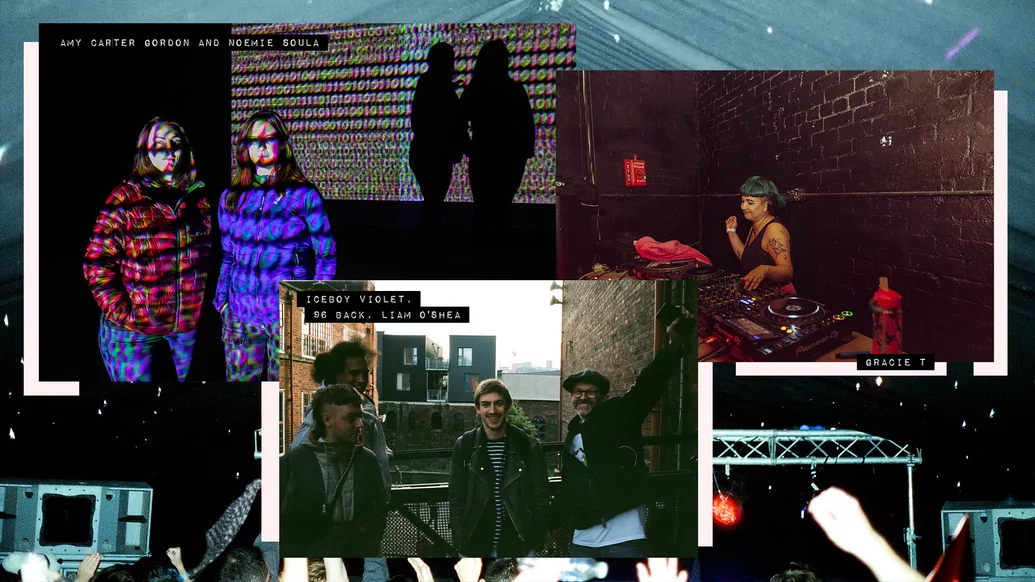
It’s a feeling that carries into the festival’s closing sequence in the cathedral on Sunday, where Rotheram’s Mark Fell curates a line-up of acoustic music featuring new works by Beatrice Dillon and Nakul Krishnamurthy, and a performance of Morton Feldman’s Crippled Symmetry, all played by the Explore Ensemble. It’s a soft landing for some in attendance at No Bounds sixth edition, aside from those who head back to Hope Works for a final push featuring a live set from breakthrough Yorkshire post-punk disco outfit, Working Men’s Club.
O’Shea plays the final set of the festival; he hammers it out as loud as he can for 30 minutes, loading up tunes and running into the crowd to dance with those still standing. “I was just letting it all out. It was beautiful,” he says with a smile.
After 10 years of Hope Works, six editions of No Bounds, and many challenges faced and still to come, how is he feeling about the landscape for adventurous art and music in his adopted hometown? “It’s hard times, but hard times breed good art,” he says, candidly. “One thing that I do know is: the artistry is out there. There are amazing artists out there, and I'm blown away as much as I ever have been by sets when I hear them. These new fusions and new things happening that are just properly interesting. I certainly don’t think there’s any cause for concern about creativity or kids having a way to express themselves.
“Holding onto hope, Sheffield is as good as it’s ever been... People's resilience is people's resilience, and people still want to party all the way through a recession don't they? I just have to, as I have done, be responsive to that and listen. [I have to] navigate it and work with it and maintain Hope Works’ relevance by reflecting the time that we’re in and building on it and offering something into it at the same time... I just want people to come away with a net gain of energy.”
Hope Works celebrates its 10th birthday on Friday 2nd December with DJ Bone, Tasha, Steevio & Suzybee, Vil, 96 Back Rian Treanor, Gracie T and more. Get your tickets here.
